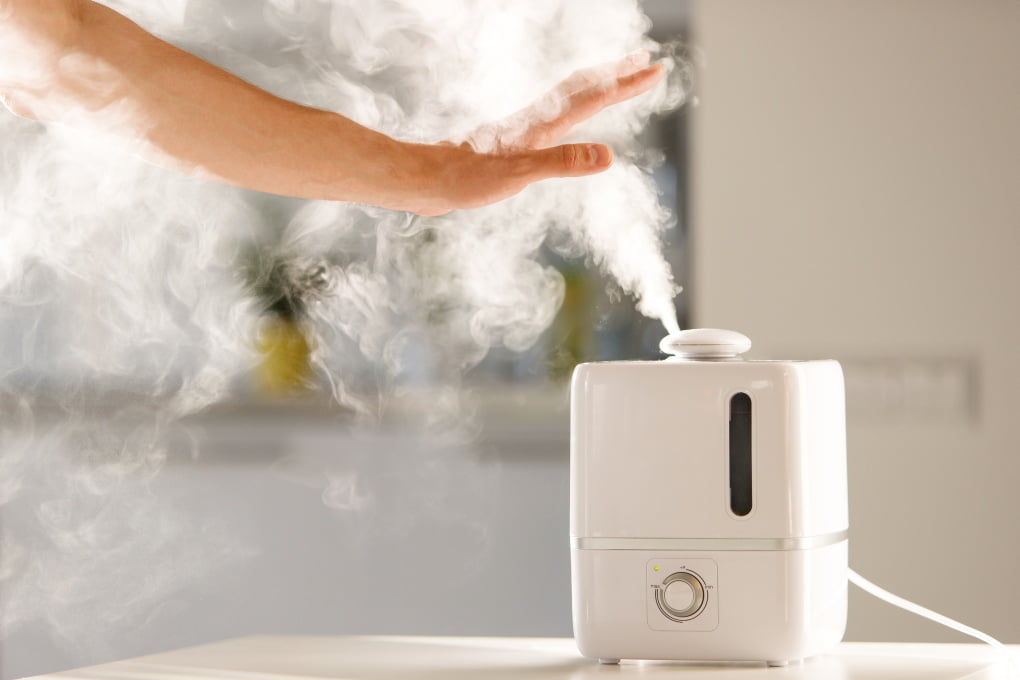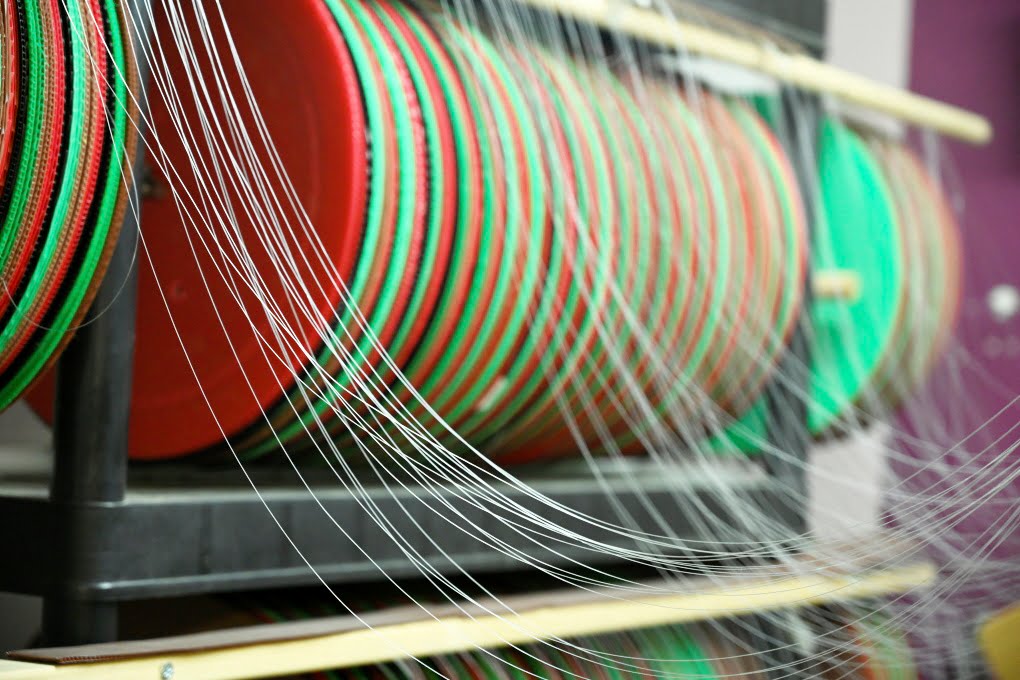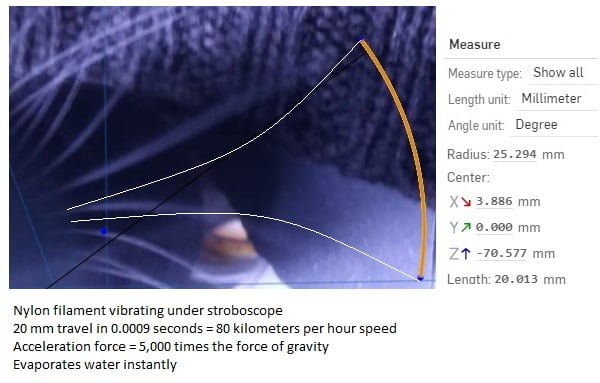Inventor says his revolutionary humidifier is cheaper, cleaner and more efficient
An inventor from Israel has patented a revolutionary air humidifier – inspired by toothbrush technology.
Aryeh Tench says it has just one moving part and is far cheaper, cleaner and more efficient than any machine currently available.
Hot countries use air conditioners. Cold countries use humidifiers. Hundreds of millions of homes across northern Europe, northern USA and elsewhere use them to add moisture to air that has been dried out by heating. Extra humidity alleviates dry sinuses, sore throats, cracked lips and other winter ailments.

But devices currently on the market breed bacteria and mold, create condensation and are a nightmare to clean.
They’re also expensive to run, especially the commercial models that are widely used in greenhouses, industry and refrigerated food transportation.
Tench believes he’s come up with a simple solution that could revolutionize the way humidifiers are made.
Machines available today either boil water to create steam, or use fans or other methods to evaporate water.
His machine has a single moving part – a wand fitted with 6,000 super-fine nylon filaments, similar to the bristles in a toothbrush.
As it rotates, the filaments vibrate extremely fast – at speeds of up to 50 mph – and break the water into droplets far smaller than those produced by any other method.
“I discovered that deep inside this little nylon filament is an awesome power,” Tench tells NoCamels.

“If you bend these filaments and let them snap, all the energy you put into them comes out in shaking those droplets at really high speed.”
It works almost instantly, evaporating water in 1/100th of a second, in a device that resembles an air conditioner.
“I don’t have a science background,” says Tench, a former US diplomat, financial advisor and, most recently, a rabbi at a yeshiva. But he always had a keen interest in engineering.
“One day I told my wife, you know, this toothbrush has little tiny filaments in it. They could be used to make water break into little droplets. But there’s a problem because they’re all stuck together so they don’t vibrate.”
He set about finding a way to embed thousands of filaments just a millimeter apart, so they could all vibrate individually and break water into the tiniest imaginable particles. And that “simple” breakthrough is the key to his new humidifier.

“People always wanted to make a good humidifier. They didn’t know it, but the answer was literally right under their nose,” he says.
“Colgate and DuPont wanted to make a new kind of toothbrush that was smooth and full of filaments instead of having them in bunches of 16 filaments as they do now, but it didn’t work out for them and they gave up.”
Sign up for our free weekly newsletter
Subscribe(I checked my toothbrush, by the way, and he’s right. The bristles are actually in groups of 16).
Tench persisted where the corporations didn’t. He succeeded and has now patented his invention.
He demonstrates a prototype machine in action, capable of pumping out dry air at 75 per cent humidity. That’s the amount of water currently held in the air compared to the maximum amount possible at a given temperature.

“A standard humidifier blows out this mist,” he says. “Put a plate in front of it and you’ll see water all over. The water fills up the room and sticks to everything, and grows infection and it’s dangerous. Ours comes out bone dry. There’s no water, and nothing to see. It’s just air,” he says.
“We have a cold, dry humidifier and nobody else does. I gave a presentation on this to the Israeli Department of Agriculture and the head of the department wrote me a WhatsApp. He told me, ‘if your machine does what you say, it’s going to be very valuable’.
“We have invented and patented one of the best methods of atomization (breaking a liquid into tiny droplets) in history, the Snapp process, which utilizes a previously unknown power source to break liquid into smaller droplets.

It took five years to refine the product and invent a manufacturing process to build the core technology.
“Now we’re designing the first alpha prototypes of a humidifier that will be faster, cleaner, cheaper, lighter, smaller, more efficient, and better at communicating with the owner, than any humidification equipment on the market,” says Tench, who co-founded Tench Labs in Jerusalem.
Tench says people are buying 30 million tiny humidifiers every year, so there’s clearly demand. But they don’t make enough humidity for a single room, let alone a whole house.
They can only humidify the whole house by bringing the water up almost to a boiling temperature, and that costs $100 a month.
Industrial humidifiers are used for growing mushrooms and other plants, preserving produce, manufacturing paper and electronics, and wine making.
“They need varying forms of very, very high humidity,” says Tench. “And they’re willing to pay all the cost of buying and running the equipment, the clean-up, and the difficulties of having this high level of humidification.”

He says his machine will cost as little as $150 to buy, and about the same to run as a 10W lightbulb, equivalent to just a $4 a month. He thinks the first models, to be manufactured in Israel, will be available to sell in about 18 months.
“We got funding from a branch of Israeli government to make prototypes and to hire engineers. So now we’re working with these engineers, making prototypes, and testing them and we’re going to go into the consumer and the industry markets.
“We are at the start of funding and seed rounds. We’re not artificial intelligence or cyber, so fundraising hasn’t really run to us.”
“I haven’t spent a lot of time at it either, because I’ve been funding this myself, but we’re definitely going to need to raise funds. And we’re definitely going to have to share the business with investors.”
Related posts

Editors’ & Readers’ Choice: 10 Favorite NoCamels Articles

Forward Facing: What Does The Future Hold For Israeli High-Tech?

Impact Innovation: Israeli Startups That Could Shape Our Future




Facebook comments